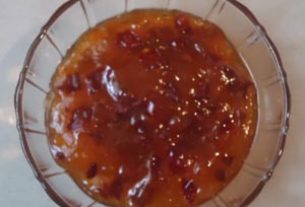Experienced Mexico travelers recognize a sure sign that a local fiesta is in progress whenever they spy a churchyard or stretch of roadway bedecked with lines of bright tissue paper cut-outs. Papel picado— an enchanting Mexican popular art form with roots in the country’s ancient cultures–lends a festive air for many types of celebrations.
In its most elementary form, papel picado is fashioned much as north-of-the-border school children make paper snowflakes. Rectangles of tissue paper are folded and snipped with scissors to create geometric patterns. These are glued side by side on a long piece of string measured to needed length. This basic process, familiar to Mexican people of all ages, is used to create quick and economical decorations that may be hung outside their homes for religious and civic festivities or used to brighten an interior room or patio for birthdays and other family celebrations.
Skilled craftsmen use awls, chisels and special cutting blades to render more intricate designs. Working over a basic pattern, they cut through as many as 50 sheets of tissue paper at a time. The design, often laid out over a delicate window pane background, may include figures such as flowers, foliage, birds, angels, crosses, skeletons and historic figures, as well as words or phrases associated with specific holidays. Borders may be straight, scalloped, zig-zagged or fringed. Each design is a unique and complex work of art requiring a keen ability to envision the use of negative space.
The use of paper as an accouterment of religious festivities can be traced back to pre-Hispanic Mexico. The Aztecs used the bark of mulberry and wild fig trees to make a rough paper called amatl . This was employed in numerous rituals to make flags and banners to decorate temples, streets, homes and fields. Paper banners splashed with liquid rubber were common adornments for rituals associated with the rain gods.
According to the Aztec civil calendar, the solar year began during the dry season–probably at the Spring equinox–with the month called Atlcahualo, meaning “want of water.” Observances aimed at garnering the favor of Chalchiuhtlicue and Tlaloc, the chief rain gods, included displaying rows of rubber-spotted Banners draped over wooden poles outside the temple. Strips of paper–representing the seasonal appearance of new foliage–were hung in the courtyards of individual homes.
The conclusion of the harvest feast Xocol Huetzi was celebrated with a contest in which youngsters scrambled up a tall pole to retrieve the insignia of the fire god Xiutecuhtli and an effigy modeled from amaranth seed. Huge amatl banners waved from the top of the pole.
The birth of war god Huitzilopochtli, a major figure in the Aztec pantheon, was commemorated in conjunction with the winter solstice, a celebration called Panquetzaliztli — “the raising of the banners.” Participants carrying marigolds and amatl banners performed ritual dances in front of the Templo Mayor. Paper flags were put up by the score to festoon fruit trees and people’s homes.
After the Spanish Conquest papel de china (tissue paper) was introduced and became the material of choice for Christian holiday decorations. Because tissue paper’s delicate consistency tends to make it ephemeral in nature, cut-outs made from plastic are fast gaining favor nowadays. Happily, the charming traditional designs that still prevail help compensate for what the sturdier, more modern material lacks in aesthetic value.
Colors schemes selected for papel picado are frequently linked with specific festivities. Sky blue or pink and white are commonly chosen for celebrations in honor of the Virgin Mary, yellow and white for patron saints. Vibrant pink, orange and purple are the key tones employed for ofrendas (offerings) associated with the Day of the Dead. Shades of purple are also widely used at Easter. The colors of the Mexican flag–red, white and green–are set aside for venerating the nation’s patroness, La Virgen de Guadalupe, as well as for commemorating Independence Day, September 16. Rainbow hues are appropriate for Christmas and non-religious festivities.
Whatever the occasion, papel picado invariably transmits the mirthful message: ¡Viva la Fiesta! ¡Viva Mexico!

